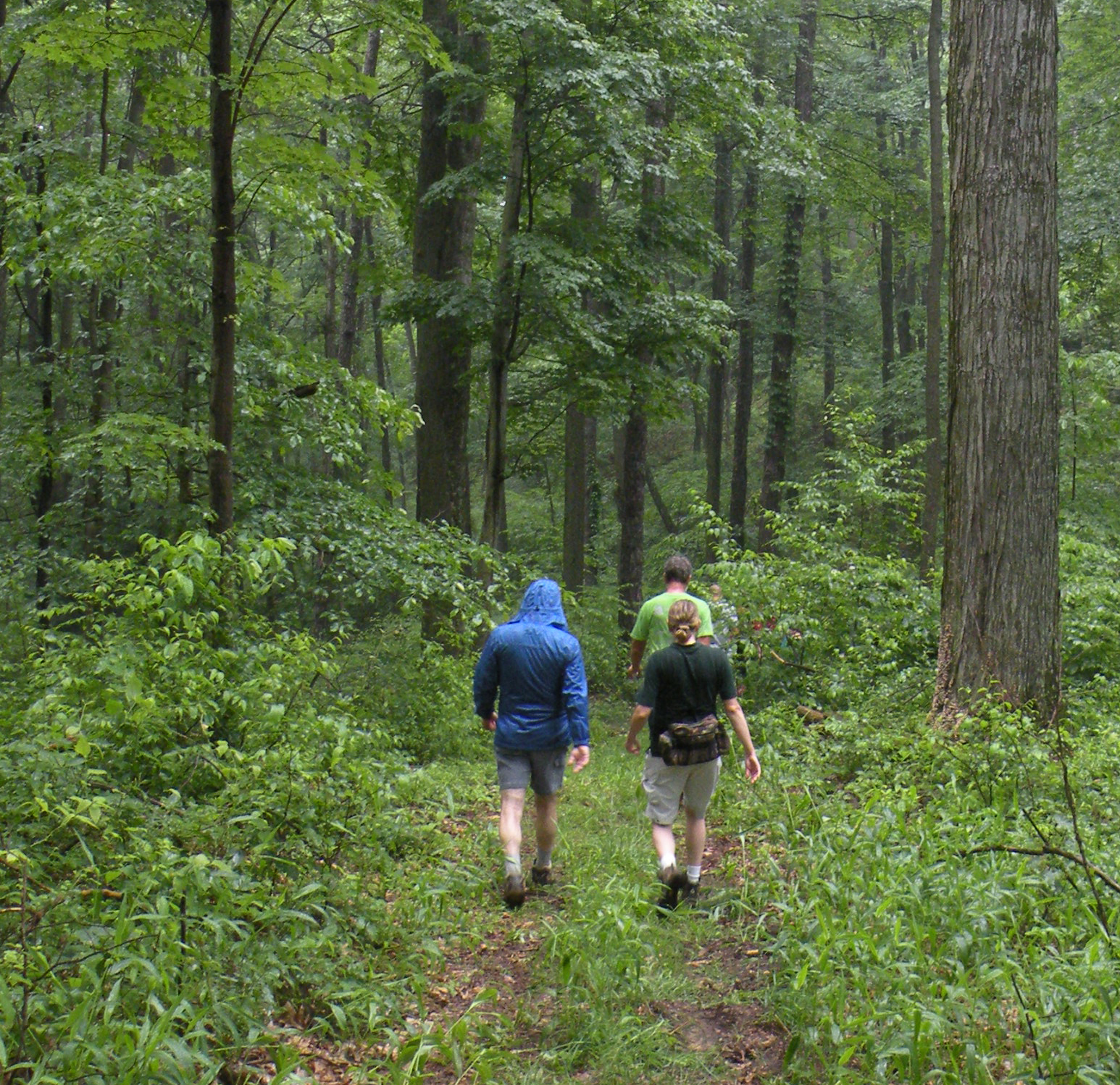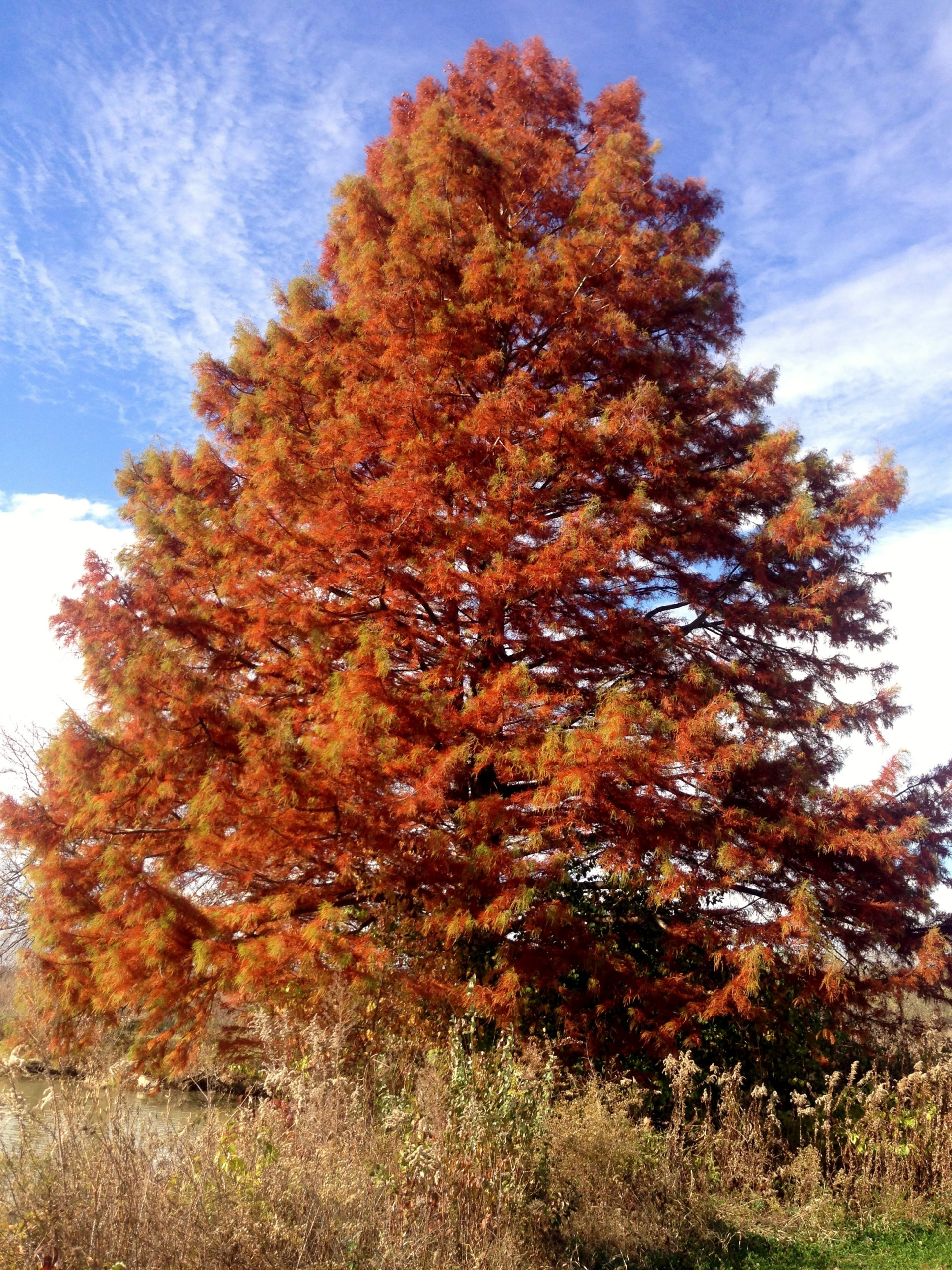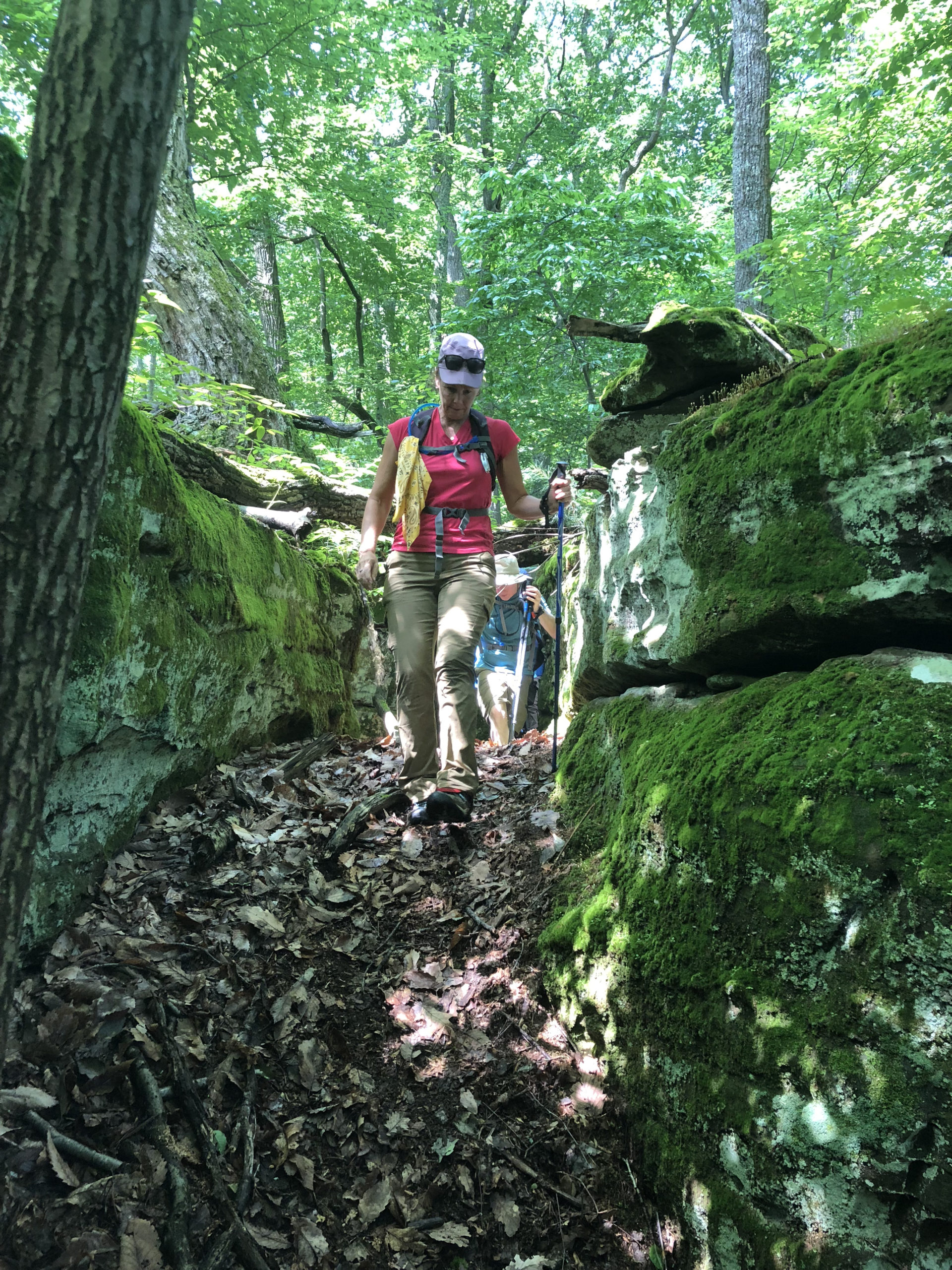TIM MICEK, GUEST BLOGGER
I wanted to get back to Clear Creek for a hike, so when I saw that the park was offering a back country hike to Winnowing Rock, which I had never seen, I made plans to go. A few surprises awaited me. The hike, leaving from the park office, was scheduled for a mid-November Saturday at 10am. The crowd was so large (we ended up with approximately seventy people), and people were coming in so late, that we waited until 10:20 to muster. Park naturalist Katie Bennett introduced the hike and answered several questions about it. We broke into groups and headed west, towards the back country. Multiple volunteers accompanied us.

We crossed the creek, some of us stopping to enjoy its sights and sounds, and found ourselves on a path wide enough for a single car. The path was practically piled with leaves. We made a shushing sound as we went through. We got to the base of a hill and turned left to reach Lake Emily. A concrete canal, constructed to catch the lake’s overflow, ran down the right side of the hill. We gathered atop the hill, where Katie told us about the lake. Previous owners of the land had built it for recreation and relaxation; it continues to serve those purposes today. Due to the geology of the area, it’s considered a Canadian lake. We took in the lake and the evergreens behind it as Katie talked. The wind picked up, and we headed back down the hill.

At the base of the hill were several bald cypresses. Their trunks rose fifty or more feet toward the sky; branches with their delicate brown needles littered the ground. I had seen bald cypresses at Dawes Arboretum many years ago, but I was still surprised to see them: I associated them with the South, where I had seen many. No doubt the warmth and wetness of the area allow them to grow in the park.
We forded a creek tributary—some of us with volunteer help—and continued our trek.
The trail rose steadily, peaked, and then descended to a little dip at the base of a hill. A boulder the size of a walk-in cooler sat just above the dip; a tree wrapped around and up its side, into the forest above. From the middle of the pack, Katie told us to stop when we reached the base. Those at the front waited for the others to catch up.
“We were going to hike to Winnowing Rock,” Katie said, “but the rain washed out part of the trail, and a tree came down too.” She pointed to a spot fifty feet ahead. “We’re going off-trail instead—to Stone Hill Fence. It’s pretty rugged. You can turn back if you want.” No one did.
We began to clamber, one by one, up a narrow defile that started to the left of the boulder. The path was steep and uneven underneath; it was overgrown with vines and such. We held them so that others would not be caught by them. At one point, we stooped under a tree that had fallen across the path. The top of the hill was further than it seemed.

“Watch the greenbrier!” Katie yelled, and I assumed that I knew what she was referring to. After all, I had been hiking for decades—in Central Ohio and elsewhere. I had picked my way through prickly places in fields and forests throughout the U.S. I had read about briar
patches and even stayed at The Greenbrier, the resort in West Virginia. Not until I looked down, though, and saw the dark green stems, punctuated with sharp thorns, did I realize what greenbrier really is. It took a bright November day—with all, or most, of the foliage gone—for me to see the plant and know it for the first time. I wondered how many other things I thought I knew but really did not.
When we got to the top, we turned left and crept along a sketchy path atop the ridge. Katie waited for the rest of the group to catch up. Stones of different sizes—some could be held in one hand, others would take two—littered the path. They were remnants of a fence that had once surrounded the hill, Katie told us. Native Americans had kept their horses, and white settlers their livestock, inside the stone fence; hence the name of the hill. Someone pointed out a small, blanched animal skull. Its eye sockets pointed outward rather than forward, indicating that it was a prey, rather than predator, animal.
We continued on the path over the hill and, in part through a long rock chamber, down to the other side. From there, we split into two groups and took turns exploring two caves. One, to the left, was relatively shallow; the walls around its entrance were covered with at least four different mosses, plants, and the like. The other, to the right, was narrower and deeper; it made for better shelter. When both sets of spelunkers were finished, we stood on the hillside and admired views of the ravines and the hills beyond on either side. Straight ahead, we could make out the home of the previous property owners. To its left, Lake Emily lay hidden in the distance.
Then it was time to return to the park office. We endured the same mix of up and down and across as we retraced our steps —only in reverse. Some of us hurried; others took their time. Some peeled off, or at least unbuttoned, outer layers; it was warmer now. By the time we got back, we had been out for close to three hours. We got in our cars and drove away to our different destinations.
I had begun the day wanting to enjoy some hiking in one of my favorite Metro Parks. I ended up learning not just about the park but about nature, about life and about myself. In that respect, it was a typical Metro Parks program for me.
